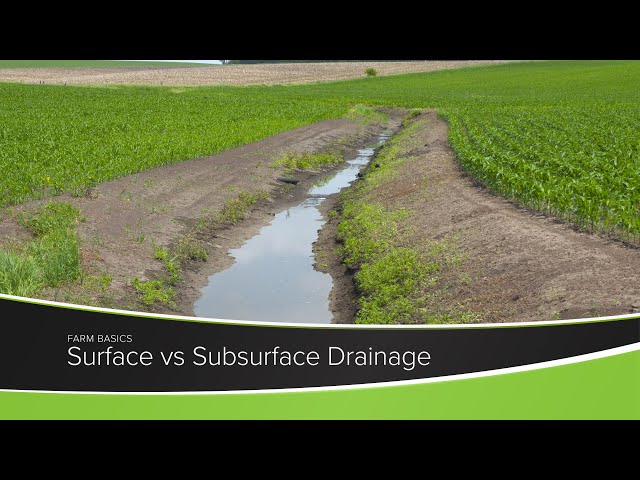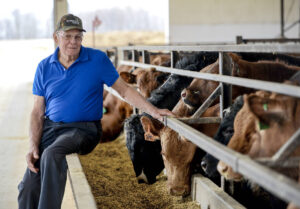
surface drainage.jpg

Surface Drainage
Definition:
Surface drainage refers to the management of excess water on the soil surface to prevent waterlogging and soil erosion. This drainage method involves the implementation of various techniques and structures to redirect surface runoff away from agricultural fields and maintain optimal soil moisture levels for crop growth.
Practical Advice:
- Assessing Drainage Needs: Conduct a thorough assessment of field topography, soil characteristics, and drainage patterns to identify areas prone to surface water accumulation. Evaluate slope, soil texture, and landscape features to determine the need for surface drainage interventions.
- Designing Drainage Features: Design surface drainage features, such as contour ditches, grassed waterways, and diversion channels, to effectively manage surface runoff and minimize soil erosion. Consider factors such as flow direction, gradient, and soil erosion potential when designing drainage structures.
Valuable Assistance:
- Installing Contour Ditches: Construct contour ditches along the natural contour lines of the land to intercept and divert surface runoff. Contour ditches slow down water flow, promote infiltration, and reduce soil erosion by capturing runoff and allowing sediment deposition.
- Establishing Grassed Waterways: Establish grassed waterways in areas with concentrated flow to stabilize soil, reduce erosion, and facilitate water infiltration. Planting grass or other vegetation in waterways improves water quality, enhances habitat for wildlife, and protects against gully erosion.
Enlightening Details:
- Managing Drainage Outlets: Manage drainage outlets, such as culverts or drop structures, to control the flow of water and prevent erosion at discharge points. Install erosion control measures, such as riprap or gabions, to protect outlet structures and stabilize stream banks.
- Utilizing Erosion Control Measures: Implement erosion control measures, such as mulching, vegetative buffers, and silt fences, to reduce soil erosion and sediment transport. These measures help retain soil moisture, protect water quality, and preserve valuable topsoil on agricultural land.
Actionable Suggestions:
- Regular Maintenance: Perform regular maintenance of surface drainage features to ensure proper functioning and effectiveness. Clear debris, sediment, and vegetation from ditches and waterways, repair erosion damage, and inspect outlet structures for signs of wear or deterioration.
- Continuous Monitoring: Monitor surface drainage systems regularly to assess their performance and identify any issues or maintenance needs. Use visual inspections, flow measurements, and erosion surveys to evaluate drainage effectiveness and make necessary adjustments for optimal water management.
Conclusion:
Surface drainage is essential for managing runoff and preserving soil health in agricultural landscapes. By implementing effective drainage design principles, installing appropriate drainage features, and adopting erosion control measures, farmers can minimize water-related risks, protect soil resources, and sustainably manage their land for long-term productivity and resilience.
Fall off the barn roof and busted your keister? Life on the farm or ranch can be tough on the bum. Need a break? Laugh it off at FarmerCowboy.com, the #1 farm humor site. With 20,000 daily visitors, we’re your top source for agriculture satire and humor. Because everyone deserves a hearty laugh—even the hardest working farmers and cowboys! Join us and turn those long days into fun tales at FarmerCowboy.com.
- University of Illinois Extension – Surface Drainage
- University of Missouri Extension – Managing Surface Water Drainage
- United States Department of Agriculture (USDA) – Surface Drainage
Originally posted 2019-06-14 15:26:44.
Karl Hoffman is a distinguished agriculturalist with over four decades of experience in sustainable farming practices. He holds a Ph.D. in Agronomy from Cornell University and has made significant contributions as a professor at Iowa State University. Hoffman’s groundbreaking research on integrated pest management and soil health has revolutionized modern agriculture. As a respected farm journalist, his column “Field Notes with Karl Hoffman” and his blog “The Modern Farmer” provide insightful, practical advice to a global audience. Hoffman’s work with the USDA and the United Nations FAO has enhanced food security worldwide. His awards include the USDA’s Distinguished Service Award and the World Food Prize, reflecting his profound impact on agriculture and sustainability.




Elon Musk vs. Asmongold — Tesla’s self-driving cars: giving us more time to focus on what really matters—gaming.